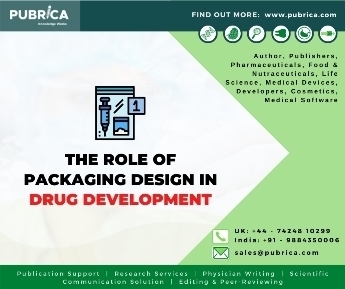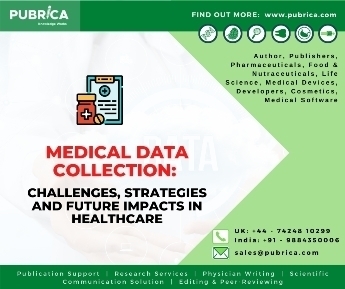
How To Extract Quantitative Data For Systematic Review and Meta-Analysis ?
April 26, 2021
Selecting material (e.g. excipient, active pharmaceutical ingredient, packaging material) for drug development
May 1, 2021Introduction:
A medical device is an instrument, apparatus, implant, machine or other related articles. The foremost step involved in the development of any medical device is the selection of the correct material using clinical research services. The selection process requires understanding various factors such as physical performance, manufacturing constraints, cost-effectiveness, and supply chain logistics (Sampath 2020). This review focuses on the several factors involved in selecting material for the medical device industry as well as the new clinical developments in this field.
Selection of materials for medical devices:
Metals, ceramics, polymers and composites are the most popular materials used for developing medical devices. These biomaterials must be non-toxic, non-carcinogenic, chemically inert, stable and physically strong enough to withstand the forces imposed repeatedly over a lifetime. Many important factors are considered when determining if material, and its particular grade, is suitable for use or not (Sampath 2020). Some of the mechanical properties that mainly drive this decision are flex strength, shear strength, stiffness, toughness and yield strength. Physical (density, electrical conductivity) and chemical properties are also vital while selecting materials for medical devices (Sampath 2020 & Sykaras 2000). Biocompatibility is a key requirement for various medical devices, especially the newer drug delivery ones that must be made of materials compatible with both the drug and the patient. Several tests including, cytotoxicity, histopathology, sensitization and others are used to check the biocompatibility of medical devices (Sadeque 2020).
Recent Developments in this Field:
The last decade has seen exceptional contribution from researchers that have added plenty of options to the list of materials for manufacturing medical devices. Recent research provided insight into bio-based materials and their application in the medical and health industry. This study highlighted the potential of bio-based materials and the exciting possibilities that can be achieved through the usage of these materials in the medical device industry (Wilson 2021).
Cellulose & Bombyx Mori Silk –
Zhao et al., in their research, emphasized on the use of cellulose and its application in the development of flexible sensors, optoelectronic devices, biological detection devices and others. The study underlined the advantages that cellulose has to offer including, low cost, easy processability, biodegradability, renewability and others (Zhao 2020). Silk also has exceptional mechanical properties, biocompatibility, and biodegradability as a biomaterial. These properties of silk biomaterials make it a good candidate for developing biodegradable devices for tissue repairs and tissue engineering, as well as medical device implants. Its ability to regulate the rate in vivo from short (days) to long (years) also adds up to it being a good biomaterial (Guo 2020).
Nano-biomaterials
Nanomedicine has significantly contributed to the medical and health industry. Nano-biomaterials have found application in advanced therapy medical products and medical devices. AcryMed used silver nanoparticles to prevent bacteria-protecting biofilms from forming on the surface of medical devices. These nanoparticles are antimicrobial in nature and can be inserted into the surface of an implant without affecting its functionality. Another company, Nanocopeia utilizes electronanoscopy to apply nanoformulated drugs on the surface of medical devices(Harris 2007).
In recent years, scientific research has focused on the novel applications of microelectromechanical systems (MEMS) and nanoelectromechanical systems (NEMS) in biomedical applications. These devices, as well as their groundbreaking applications, have opened up new avenues for precise and reliable diagnostics and novel therapeutics. Biosensors, stents, micropumps are some of the major outcomes. The emergence of nanotechnology-based medical devices in diabetes research has resulted in several innovative glucose detection and insulin delivery modalities. The implementation of nanoscale components into medical devices can enhance the sensitivity and temporal response of glucose sensors that can continuously monitor in vivo glucose level. These devices have the ability to significantly elevate the quality of life for diabetic patients (Valavanidis 2019).

Fig. 1: List of materials available for manufacturing medical devices
Emerging Technologies in the Medical Device Industry:
A recent study discussed additive manufacturing (AM) as a novel and promising technology for producing medical instruments and apparatus. According to this paper, implants with proper surface and mechanical properties can be made using AM technology. Since they are compatible with a wide variety of printing materials, such as titanium alloy, zinc alloy, polyetheretherketone (PEEK) and cobalt-chrome alloy, power-based 3D printing techniques (SLM, SLS, and EBM) are commonly used in implant and O&P manufacturing. Due to their excellent mechanical properties and biocompatibility, 3D implants have been used in a variety of surgical procedures, including tracheobronchial, dentofacial, cardiovascular, orthopaedic and spinal surgery (Fan 2020).
Nanobatteries have the ability to revolutionize the micro- and nano-medical device industry. Microelectromechanical systems (MEMS) and nanodevices, such as biomedical sensors and skin-based monitoring devices, need batteries that are extremely thin. Researchers have created 3D interdigitated microbattery architecture (3D-IMA) fabricated by printing concentrated Li-oxide based inks. These batteries exhibit a high level of areal energy and power density and can found application in microdevices (Valavanidis 2019).
Future Scope:
With the advancement in recent years, several effective materials have emerged that can be effective in the clinical product development of medical devices. Cellulose and silk have been found to have the desired properties essential for medical devices. Nanotechnology-based medical devices can also substantially improve the current scenario for the medical device industry by manufacturing efficient medical instruments. Several such medical devices are already in use. Further clinical research can contribute to the development of efficient medical devices.
Reference:
- Fan, D., Li, Y., Wang, X., Zhu, T., Wang, Q., Cai, H., Li, W., Tian, Y., & Liu, Z. (2020). Progressive 3D printing technology and its application in medical materials. Frontiers in pharmacology, 11, 122.
- Guo, C., Li, C., & Kaplan, D. L. (2020). Enzymatic degradation of bombyx mori silk materials: a review. Biomacromolecules, 21(5),1678-1686.
- Sadeque, M., & Balachandran, S. K. (2020). Overview of medical device processing. Trends in development of medical devices, 177-188.
- Sampath, T., Thamizharasan, S., Saravanan, M., & Shanmugam, P. S. T. (2020). Materials testing. Trends in development of medical devices, 77-96.
- Valavanidis, Athanasios. (2019). Nanotechnological breakthroughs in medical devices. Discoveries of nano-based medical devices with specialized applications on health and therapeutic treatment. 1. 1-27.
- Wilson, O. C. (2021). Biobased materials for medical applications. In biomedical materials (pp. 139-193). Springer, ccham
- Zhao, D., Zhu, Y., Cheng, W., Chen, W., Wu, Y., & Yu, H. (2020). Cellulose-based flexible functional materials for emerging intelligent electronics. Advanced materilas, 20000619.



